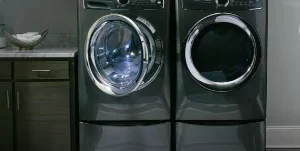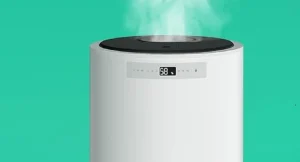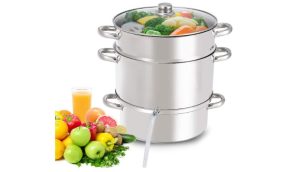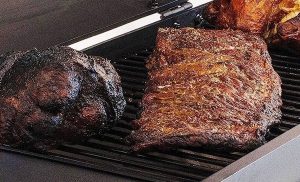6 Common Green Mountain Grill Problems and Their Solutions
If your Green Mountain Grill isn’t heating up, first check the power source and ensure the grill is lighting properly. This step is crucial in diagnosing and addressing the issue efficiently.
When facing Green Mountain Grill problems, such as the grill not heating up or not working at all, several factors could be at play. A common issue is the igniter not functioning correctly, which is vital for starting the grill. If the grill won’t connect to WiFi, resetting the WiFi settings may help, as connectivity is essential for modern grilling experiences. Troubleshooting these grills often involves checking the power supply to ensure the grill has not lost power and verifying that the heating element is working as expected.
For grills taking a long time to heat up or not maintaining temperature, examining the thermal sensor and ensuring the auger is turning and feeding pellets properly are key steps. An auger jam or malfunction can lead to feeding issues, affecting the grill’s heat output.
Regular maintenance, such as cleaning the auger and replacing the fuse if necessary, can prevent many of these problems. The Green Mountain Grills support team is available for assistance, offering valuable resources like warranty registration and service support to help address and resolve issues.
Resetting the grill’s WiFi and ensuring a proper startup and shut down procedure are also integral to the grill’s optimal performance.
Read More: Electric Smoker vs. Pellet Smoker: How to Choose the Best?
Common Green Mountain Grill Problems and Their Solutions
Green Mountain Grills are popular for their convenience and quality, but like any outdoor appliance, they can encounter issues. Identifying common problems and understanding how to fix them can enhance your grilling experience and extend the life of your grill.
1. Power Source and Electrical Issues
One frequent problem is the grill failing to power on, often due to issues with the power source or electrical connections. This can be due to a tripped circuit breaker, a blown fuse, or damaged power cords. To resolve this, first, ensure the grill is connected to a functioning outlet. Check the power cord for any visible damage and replace it if necessary. If the grill still doesn’t power on, inspect the fuse and replace it if blown.
2. Igniter Failure
A non-functioning igniter is another common issue, preventing the grill from lighting. Dirt, debris, or damage can hinder the igniter’s performance. Cleaning the igniter carefully with a soft brush can remove any obstructions. If the problem persists, the igniter may need to be replaced. Ensure the grill is unplugged before attempting to replace the igniter, following the manufacturer’s guidelines for installation.
3. Pellet Feeding Problems
Problems with pellet feeding can arise from an auger jam or malfunction, leading to inadequate heating. Check for any blockages or pellet clumps in the hopper and auger system. Cleaning out the hopper and ensuring it’s filled with high-quality, dry pellets can often resolve feeding issues. If the auger is still not functioning correctly, inspect the motor connections or consider replacing the motor if it has failed.
4. Fluctuating Temperatures
Maintaining consistent temperatures is crucial for optimal grill performance. Fluctuating temperatures can be caused by external factors, such as wind or ambient temperature changes, or by issues with the grill’s internal components, such as the thermal sensor. Shielding the grill from wind and ensuring it’s not placed in direct sunlight can help. Additionally, checking and cleaning the thermal sensor to ensure it’s functioning correctly can resolve temperature inconsistencies.
5. WiFi Connectivity Issues
For models equipped with WiFi capabilities, connectivity issues can limit the ability to remotely monitor and control the grill. Resetting the grill’s WiFi settings can often re-establish a connection. Refer to the owner’s manual for specific instructions on how to reset the WiFi module. Ensuring your home’s WiFi network is stable and that the grill is within range can also improve connectivity.
6. Excessive Smoke Production
While some smoke is expected, excessive smoke can indicate problems with airflow, pellet quality, or the grill’s settings. Using high-quality pellets and ensuring the grill’s lid is properly closed during use can reduce unnecessary smoke. Cleaning the grill regularly to prevent grease buildup and checking for any obstructions in the air vents can also help maintain proper airflow and reduce smoke production.
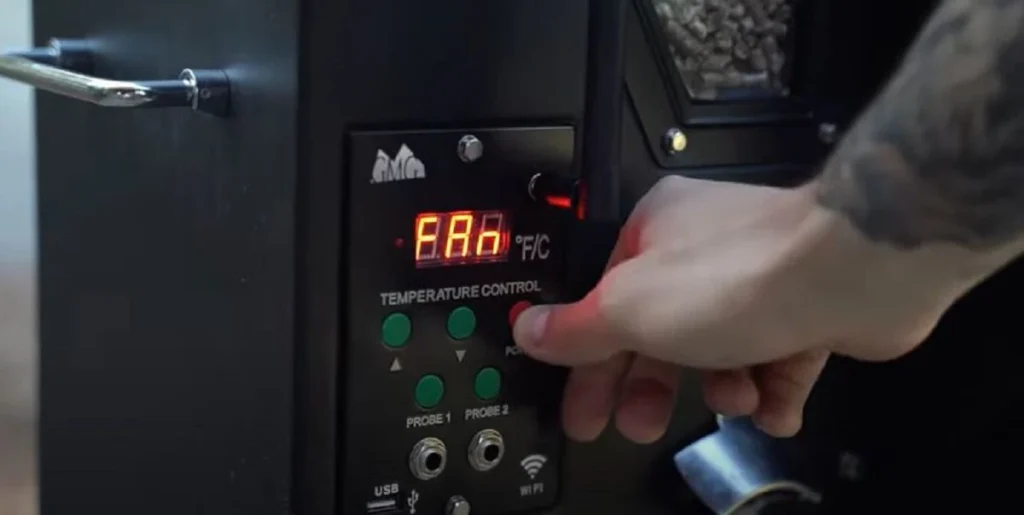
Common Heating Issues with Green Mountain Grills and Solutions
Several issues can prevent a Green Mountain Grill from heating up properly, affecting its performance and the overall grilling experience. These problems can range from power supply issues to component failures. Understanding these common causes and how to address them can help ensure your grill operates efficiently.
Power Source and Electrical Connections
A frequent reason why a Green Mountain Grill may not heat up is related to the power source and electrical connections. If the grill is not receiving power, it will not ignite or heat.
Checking the power cord for any signs of damage, ensuring it is firmly plugged into both the grill and the outlet, and verifying that the circuit breaker has not tripped are critical first steps. Should these measures not resolve the issue, inspecting the grill’s fuse for continuity using a multimeter and replacing it if necessary can restore functionality.
Faulty Igniter
Another common issue is a faulty igniter, which can prevent the grill from lighting. Over time, igniters can wear out or become obstructed, leading to ignition failures. Cleaning the igniter with a soft brush to remove any debris and checking for visible damage are good practices.
If cleaning does not solve the problem, replacing the igniter is the next course of action. This typically involves removing the grill’s side panel to access the igniter, disconnecting it, and installing a new one following the manufacturer’s instructions.
Auger Malfunctions
The auger’s role in feeding pellets into the firebox is crucial for maintaining the grill’s temperature. An auger malfunction, such as a jam or failure, can lead to inadequate pellet supply and, consequently, insufficient heat.
To fix this, first, ensure that the hopper is filled with high-quality, dry pellets. Next, remove any obstructions or clumped pellets causing the jam. If the auger is not turning at all, checking the motor’s connections and functionality is necessary. In some cases, the auger motor may need to be replaced.
Pellet Quality and Moisture
Using low-quality or moist pellets can significantly impact the grill’s ability to heat up properly. Poor pellet quality can cause inconsistent burning, while moisture in pellets leads to poor ignition and reduced heat output.
Always use high-quality, dry pellets designed for pellet grills. If you suspect moisture is the issue, replace the existing pellets with a fresh, dry batch. Storing pellets in a dry, sealed container can prevent moisture absorption and ensure optimal performance.
Why Your Green Mountain Grill Takes Longer to Heat Up
Experiencing delays in heating can be a common issue for Green Mountain Grill users. Several factors play a crucial role in affecting the grill’s heating time, including external temperatures, the grill’s overall condition, and regular maintenance practices.
Cold weather can significantly slow down the heating process as the grill struggles to reach the desired temperature. Similarly, a grill that is not well-maintained, with built-up grease and debris, will also experience longer heating times.
Regular cleaning and maintenance, especially before the cold seasons, can greatly improve heating efficiency. Inspecting and cleaning the burn pot, firebox, and internal components ensure that airflow is not obstructed and the grill can operate effectively.
Resolving Connectivity Problems with Your Green Mountain Grill
Connectivity problems can hinder the convenience of using a Green Mountain Grill, especially models that feature WiFi capabilities for remote monitoring and control. To resolve connectivity issues, it’s essential to reset the WiFi settings on the grill.
This can often re-establish a stable connection. Users should ensure that their home WiFi network is operational and the signal strength is sufficient where the grill is located.
If problems persist, consulting the user manual for specific troubleshooting steps or contacting customer support can provide additional guidance on maintaining a stable connection.
The Importance of Regular Maintenance for Green Mountain Grills
The longevity and performance of a Green Mountain Grill are heavily dependent on regular maintenance. Ensuring the grill is cleaned after each use, including the auger and igniter, can prevent common operational issues.
Replacing the fuse as needed is also vital for safety and functionality. A routine maintenance schedule that includes checking for wear and tear on electrical connections and moving parts, as well as ensuring that the hopper is free of old pellets that could absorb moisture, is crucial.
These proactive steps help in maintaining optimal performance and extending the life of the grill.
Troubleshooting Auger and Feeding Problems in Green Mountain Grills
Auger and pellet feeding issues can significantly impact the functionality of a Green Mountain Grill. The auger’s role in moving pellets into the firebox is critical for consistent heating.
A non-turning auger or one that experiences frequent jams can lead to uneven cooking temperatures or the grill failing to heat altogether. To troubleshoot, first ensure there are no physical blockages within the auger tube. High-quality, dry pellets are less likely to cause jams.
If the issue is with the motor or electrical supply to the auger, professional inspection or replacement may be necessary to ensure smooth operation and restore the grill to its optimal condition.
